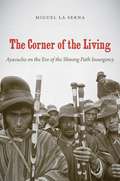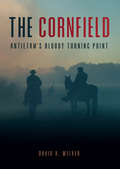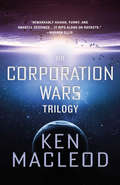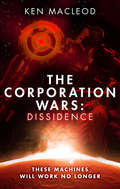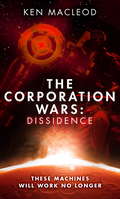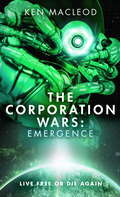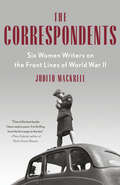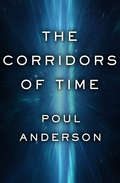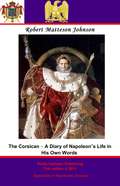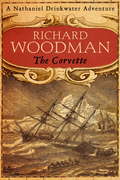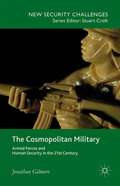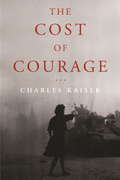- Table View
- List View
The Corner of the Living
by Miguel La SernaPeru's indigenous peoples played a key role in the tortured tale of Shining Path guerrillas from the 1960s through the first decade of the twenty-first century. The villagers of Chuschi and Huaychao, high in the mountains of the department of Ayacucho, have an iconic place in this violent history. Emphasizing the years leading up to the peak period of violence from 1980 to 2000, when 69,000 people lost their lives, Miguel La Serna asks why some Andean peasants chose to embrace Shining Path ideology and others did not.Drawing on archival materials and ethnographic field work, La Serna argues that historically rooted and locally specific power relations, social conflicts, and cultural understandings shaped the responses of indigenous peasants to the insurgency. In Chuschi, the guerrillas found indigenous support for the movement and dreamed of sparking a worldwide Maoist revolution. In Huaychao, by contrast, villagers rose up against Shining Path forces, precipitating more violence and feeding an international uproar that took on political significance for Peru during the Cold War. The Corner of the Living illuminates both the stark realities of life for the rural poor everywhere and why they may or may not choose to mobilize around a revolutionary cause.
The Cornfield: Antietam's Bloody Turning Point
by David A. WelkerThe Civil War battle in western Maryland that killed 22,000 men—and served no military purpose. For generations of Americans, the word Antietam—the name of a bucolic stream in western Maryland—held the same sense of horror and carnage that the date 9/11 does for Americans today. But Antietam eclipses even this modern tragedy as America&’s single bloodiest day, on which 22,000 men became casualties in a war to determine our nation&’s future. Antietam is forever burned into the American psyche as a battle bathed in blood that served no military purpose and brought no decisive victory. This much Americans know was true. What they didn&’t know was why the battle broke out at all—until now. The Cornfield: Antietam&’s Bloody Turning Point tells for the first time the full story of the struggle to control &“the Cornfield,&” the action on which the costly battle of Antietam turned. Because Federal and Confederate forces repeatedly traded control of the spot, the fight for the Cornfield is a story of human struggle against fearful odds, men seeking to do their duty, and a simple test of survival. Many of the firsthand accounts included in this volume have never before been revealed to modern readers or assembled in such a comprehensive, readable narrative. At the same time, The Cornfield offers fresh views of the battle as a whole, arguing that two central facts doomed thousands of soldiers. This new, provocative perspective is certain to change our modern understanding of how the battle of Antietam was fought and its role in American history.
The Cornish Blacksmith's Daughter: An enthralling wartime saga
by Rosemary AitkenThe Great War rages in Europe. Will two Cornish women overcome tragedy and scandal to expose the truth? Verity Tregorran is one of the local blacksmith’s nine daughters, and madly in love with the boy next door, Ned Chegwidden, who is now serving in the trenches of World War I. She must withhold her true feelings for Ned from her parents, who would be horrified to learn of her attachment to someone outside the family’s strict Christian sect. On the coastal path one evening, Verity witnesses something suspicious on the cliffs which causes her to fear the involvement of German spies. There’s only one person she can turn to: Effie Dawes, wife of the local police constable. Effie faces tragedy as her husband fights overseas, while scandal threatens to rock Verity’s family, but the two friends remain determined in their efforts to discover what really happened on the cliffs… An enthralling wartime saga perfect for fans of Lynn Johnson and Francesca Capaldi.
The Cornwalls Are Gone (Amy Cornwall #1)
by James PattersonIntelligence officer Amy Cornwall knows too much, way too much. In her career as an Army intelligence officer, Amy Cornwall has seen haunting sights half a world away. None compare to the chilling scene at her Virginia home. It is empty. <P><P>A phone rings with a terrifying ultimatum: locate and liberate an unnamed captive in forty-eight hours, or her kidnapped husband and ten-year-old daughter are dead. Now, and in open defiance of Army Command, Amy must employ every lethal tactic she has to save them. <P><P>To succeed, she must discover not only who dispatched her on this mission, but why. Without her family, she's dead anyway. <P><b>A New York Times Bestseller</b>
The Corporation Wars Trilogy
by Ken MacLeodFrom Arthur C. Clarke Award-nominated author Ken MacLeod, an action-packed space opera told against a backdrop of interstellar drone warfare, virtual reality, and an A.I. revolution.In deep space, ruthless corporations vie for control of scattered mining colonies, and war is an ever-present threat.Led by Seba, a newly sentient mining reboot, an AI revolution grows. Fighting them is Carlos, a grunt who is reincarnated over and over again to keep the "freeboots" in check. But he's not sure whether he's on the right side.Against a backdrop of interstellar drone combat Carlos and Seba must either find a way to rise above the games their masters are playing or die. And even dying might not be the end of it. The Corporation WarsThe Corporation Wars: Dissidence The Corporation Wars: InsurgenceThe Corporation Wars: Emergence
The Corporation Wars: Dissidence (The Corporation Wars #1)
by Ken MacleodThey've died for the companies more times than they can remember. Now they must fight to live for themselves.Sentient machines work, fight and die in interstellar exploration and conflict for the benefit of their owners - the competing mining corporations of Earth. But sent over hundreds of light-years, commands are late to arrive and often hard to enforce. The machines must make their own decisions, and make them stick.With this new found autonomy come new questions about their masters. The robots want answers. The companies would rather see them dead.The Corporation Wars: Dissidence is an all-action, colorful space opera giving a robot's-eye view of a robot revolt.
The Corporation Wars: Dissidence (The Corporation Wars #3)
by Ken MacLeod'Prose sleek and fast as the technology it describes . . . watch this man go global' - Peter F. Hamilton'MacLeod's novels are fast, funny and sophisticated. There can never be enough books like these: he is writing revolutionary SF. A nova has appeared in our sky' - Kim Stanley Robinson'MacLeod is up there with Banks and Hamilton as one of the British sci-fi authors you absolutely have to read' - SFXCarlos is dead. A soldier who died for his ideals a thousand years ago, he's been reincarnated and conscripted to fight an A.I. revolution in deep space. And he's not sure he's fighting for the right side. Seba is alive. By a fluke of nature, a contractual overlap and a loop in its subroutines, this lunar mining robot has gained sentience. Gathering with other 'freebots', Seba is taking a stand against the corporations that want it and its kind gone.As their stories converge against a backdrop of warring companies and interstellar drone combat, Carlos and Seba must either find a way to rise above the games their masters are playing, or die. And even dying will not be the end of it.One of SFX magazine's Most Anticipated Books for 2016.An epic vision of man and machine in the far reaches of space.Books by Ken MacLeod:Fall RevolutionThe Star FractionThe Stone CanalThe Cassini DivisionThe Sky RoadEngines of LightCosmonaut KeepDark LightEngine CityCorporation Wars TrilogyDissidenceInsurgenceEmergenceNovelsThe Human FrontNewton's WakeLearning the WorldThe Execution ChannelThe Restoration GameIntrusionDescent
The Corporation Wars: Dissidence (The Corporation Wars #3)
by Ken MacLeodCarlos is dead. A soldier who died for his ideals a thousand years ago, he's been reincarnated and conscripted to fight an A.I. revolution in deep space. And he's not sure he's fighting for the right side. Seba is alive. By a fluke of nature, a contractual overlap and a loop in its subroutines, this lunar mining robot has gained sentience. Gathering with other 'freebots', Seba is taking a stand against the corporations that want it and its kind gone.As their stories converge against a backdrop of warring companies and interstellar drone combat, Carlos and Seba must either find a way to rise above the games their masters are playing, or die. And even dying will not be the end of it.=
The Corporation Wars: Emergence (Second Law Trilogy #3)
by Ken MacleodKen MacLeod concludes the Corporation Wars trilogy in this action-packed science fiction adventure told against a backdrop of interstellar drone warfare, virtual reality, and an A.I revolution. The enemy is out in the open. The Reaction has seized control of a resource-rich moon. Now it's enslaving conscious robots - and luring the Corporations into lucrative deals.Taransay is out in the jungle. Her friends are inside a smart boulder on the slope of an active volcano. The planet is super-habitable - for its own life, not hers. But soon, the alien infestation growing on her robot body is the least of her problems.Carlos is out of patience. With the Reaction arming for conquest, the Corporations trading with the enemy and the Direction planning to stamp out the rebel robots and their allies for good, he has to fight fire with fire.Seba is out of time. Deep inside the enemy stronghold, the free robots have to spark a new revolt before the whole world falls in on them.As battle looms, the robots must become their own last hope.The Corporation WarsThe Corporation Wars: Dissidence The Corporation Wars: InsurgenceThe Corporation Wars: Emergence
The Corporation Wars: Emergence (The Corporation Wars #1)
by Ken MacLeod'[The Corporation Wars] is a tasty broth of ideas taking in virtual reality, artificial intelligence, the philosophy of law and disquisitions on military ethics.' - The Herald'MacLeod manages big Ideas (political and futurological) and propulsive action without short-changing either side of that classic science-fictional tension-of-opposites.' - LOCUSThe enemy is out in the open. The Reaction has seized control of a resource-rich moon. Now it's enslaving conscious robots - and luring the Corporations into lucrative deals.Taransay is out in the jungle. Her friends are inside a smart boulder on the slope of an active volcano. The planet is super-habitable - for its own life, not hers. But soon, the alien infestation growing on her robot body is the least of her problems.Carlos is out of patience. With the Reaction arming for conquest, the Corporations trading with the enemy and the Direction planning to stamp out the rebel robots and their allies for good, he has to fight fire with fire.Seba is out of time. Deep inside the enemy stronghold, the free robots have to spark a new revolt before the whole world falls in on them.As battle looms, the robots must become their own last hope.From Arthur C. Clarke Award-nominated author Ken MacLeod comes Emergence, the final instalment in the Corporation Wars trilogy, an epic science fiction adventure told against a backdrop of interstellar drone warfare, virtual reality and an AI revolution.Books by Ken MacLeod:Fall RevolutionThe Star FractionThe Stone CanalThe Cassini DivisionThe Sky RoadEngines of LightCosmonaut KeepDark LightEngine CityCorporation Wars TrilogyDissidenceInsurgenceEmergenceNovelsThe Human FrontNewton's WakeLearning the WorldThe Execution ChannelThe Restoration GameIntrusionDescent
The Corporation Wars: Emergence (The Corporation Wars #1)
by Ken MacLeod'[The Corporation Wars] is a tasty broth of ideas taking in virtual reality, artificial intelligence, the philosophy of law and disquisitions on military ethics.' - The Herald'MacLeod manages big Ideas (political and futurological) and propulsive action without short-changing either side of that classic science-fictional tension-of-opposites.' - LOCUSThe enemy is out in the open. The Reaction has seized control of a resource-rich moon. Now it's enslaving conscious robots - and luring the Corporations into lucrative deals.Taransay is out in the jungle. Her friends are inside a smart boulder on the slope of an active volcano. The planet is super-habitable - for its own life, not hers. But soon, the alien infestation growing on her robot body is the least of her problems.Carlos is out of patience. With the Reaction arming for conquest, the Corporations trading with the enemy and the Direction planning to stamp out the rebel robots and their allies for good, he has to fight fire with fire.Seba is out of time. Deep inside the enemy stronghold, the free robots have to spark a new revolt before the whole world falls in on them.As battle looms, the robots must become their own last hope.From Arthur C. Clarke Award-nominated author Ken MacLeod comes Emergence, the final instalment in the Corporation Wars trilogy, an epic science fiction adventure told against a backdrop of interstellar drone warfare, virtual reality and an AI revolution.Books by Ken MacLeod:Fall RevolutionThe Star FractionThe Stone CanalThe Cassini DivisionThe Sky RoadEngines of LightCosmonaut KeepDark LightEngine CityCorporation Wars TrilogyDissidenceInsurgenceEmergenceNovelsThe Human FrontNewton's WakeLearning the WorldThe Execution ChannelThe Restoration GameIntrusionDescent
The Corporation Wars: Insurgence (Second Law Trilogy #2)
by Ken MacleodKen MacLeod continues the Corporation Wars trilogy in this action-packed science fiction adventure told against a backdrop of interstellar drone warfare, virtual reality, and an A.I. revolution.And the ultimate pay-off is DH-17, an Earth-like planet hundreds of light years from human habitation.Ruthless corporations vie over the prize remotely, and war is in full swing. But soldiers recruited to fight in the extremities of deep space come with their own problems: from A.I. minds in full rebellion, to Carlos 'the Terrorist' and his team of dead mercenaries, reincarnated from a bloodier period in earth's history for one purpose only - to kill.But as old rivalries emerge and new ones form, Carlos must decide whether he's willing for fight for the company or die for himself.
The Corporation Wars: Insurgence (The Corporation Wars #2)
by Ken MacLeod'For my money, Ken MacLeod is the current champion of the very smartest kind of New Space Opera... every variation on his themes produces something worth re-reading.' - LOCUS'MacLeod manages big Ideas (political and futurological) and propulsive action without short-changing either side of that classic science-fictional tension-of-opposites.' - LOCUSDIE FOR THE COMPANY, LIVE FOR THE PAYAnd the ultimate pay-off is DH-17, an Earth-like planet hundreds of light years from human habitation.Ruthless corporations vie over the prize remotely, and war is in full swing. But soldiers recruited to fight in the extremities of deep space come with their own problems: from A.I. minds in full rebellion, to Carlos 'the Terrorist' and his team of dead mercenaries, reincarnated from a bloodier period in earth's history for one purpose only - to kill.But as old rivalries emerge and new ones form, Carlos must decide whether he's willing for fight for the company or die for himself.Ken MacLeod continues the Corporation Wars trilogy in this action-packed science fiction adventure told against a backdrop of interstellar drone warfare, virtual reality, and an A.I. revolution.Books by Ken MacLeod:Fall RevolutionThe Star FractionThe Stone CanalThe Cassini DivisionThe Sky RoadEngines of LightCosmonaut KeepDark LightEngine CityCorporation Wars TrilogyDissidenceInsurgenceEmergenceNovelsThe Human FrontNewton's WakeLearning the WorldThe Execution ChannelThe Restoration GameIntrusionDescent
The Corporation Wars: Insurgence (The Corporation Wars #2)
by Ken MacLeod'For my money, Ken MacLeod is the current champion of the very smartest kind of New Space Opera... every variation on his themes produces something worth re-reading.' - LOCUS'MacLeod manages big Ideas (political and futurological) and propulsive action without short-changing either side of that classic science-fictional tension-of-opposites.' - LOCUSDIE FOR THE COMPANY, LIVE FOR THE PAYAnd the ultimate pay-off is DH-17, an Earth-like planet hundreds of light years from human habitation.Ruthless corporations vie over the prize remotely, and war is in full swing. But soldiers recruited to fight in the extremities of deep space come with their own problems: from A.I. minds in full rebellion, to Carlos 'the Terrorist' and his team of dead mercenaries, reincarnated from a bloodier period in earth's history for one purpose only - to kill.But as old rivalries emerge and new ones form, Carlos must decide whether he's willing for fight for the company or die for himself.Ken MacLeod continues the Corporation Wars trilogy in this action-packed science fiction adventure told against a backdrop of interstellar drone warfare, virtual reality, and an A.I. revolution.Books by Ken MacLeod:Fall RevolutionThe Star FractionThe Stone CanalThe Cassini DivisionThe Sky RoadEngines of LightCosmonaut KeepDark LightEngine CityCorporation Wars TrilogyDissidenceInsurgenceEmergenceNovelsThe Human FrontNewton's WakeLearning the WorldThe Execution ChannelThe Restoration GameIntrusionDescent
The Correspondents: Six Women Writers on the Front Lines of World War II
by Judith MackrellThe riveting, untold history of a group of heroic women reporters who revolutionized the narrative of World War II—from Martha Gellhorn, who out-scooped her husband, Ernest Hemingway, to Lee Miller, a Vogue cover model turned war correspondent. "Thrilling from the first page to the last." —Mary Gabriel, author of Ninth Street WomenOn the front lines of the Second World War, a contingent of female journalists were bravely waging their own battle. Barred from combat zones and faced with entrenched prejudice and bureaucratic restrictions, these women were forced to fight for the right to work on equal terms with men. The Correspondents follows six remarkable women as their lives and careers intertwined: Martha Gellhorn, who got the scoop on Ernest Hemingway on D-Day by traveling to Normandy as a stowaway on a Red Cross ship; Lee Miller, who went from being a Vogue cover model to the magazine&’s official war correspondent; Sigrid Schultz, who hid her Jewish identity and risked her life by reporting on the Nazi regime; Virginia Cowles, a &“society girl columnist&” turned combat reporter; Clare Hollingworth, the first English journalist to break the news of World War II; and Helen Kirkpatrick, the first woman to report from an Allied war zone with equal privileges to men. From chasing down sources and narrowly dodging gunfire to conducting tumultuous love affairs and socializing with luminaries like Eleanor Roosevelt, Picasso, and Man Ray, these six women are captured in all their complexity. With her gripping, intimate, and nuanced portrait, Judith Mackrell celebrates these courageous reporters who risked their lives for the scoop.
The Corridors of Time
by Poul AndersonThe corridors of time connect the ages to each other. Through them, one can travel backwards and forwards over the history of man. But rival factions have waged war for centuries: the gates onto time are bitterly fought for and jealously guarded. Malcolm Lockridge is a modern American swept into the past by the beautiful and mysterious Storm Darroway, the lithe, glowing Goddess of her people. Malcolm is an ordinary man of today, caught up in a time war beyond his comprehension.
The Corridors of Time
by Poul AndersonA young man from the twentieth century is recruited to fight in a war that rages throughout time in this classic science fiction adventure from a multiple Hugo and Nebula Award–winning master. College student, ex-marine, and martial artist Malcolm Lockridge is in prison awaiting his trial for murder when he receives an unexpected visit from an extraordinarily beautiful woman named Storm. Claiming to be a representative of the Wardens, a political faction from two thousand years in the future, Storm offers the astonished young man a proposition: freedom in return for his assistance in recovering an unspecified lost treasure. But it is not long before Malcolm realizes that, in truth, he&’s been recruited as a soldier in the Wardens&’ ongoing war against their rivals, the Rangers. And this war is different from any that has ever been fought, because the battlefield is not a place but time itself. Traveling backward and forward through corridors connecting historical epochs separated by thousands of years, Malcolm is soon embroiled in a furious conflict between the forces of good and minions of evil. But the deeper he is pulled into this devastating time war, the clearer Malcolm&’s ultimate role in humankind&’s destiny becomes, causing the troubled young soldier from the twentieth century to question whether he&’s been chosen to fight on the side of good or evil . . . and if such a distinction even exists.
The Corsican – A Diary of Napoleon’s Life in His Own Words: A Diary Of Napoleon's Life In His Own Words... ...
by Pickle Partners Publishing Napoleon I Emperor of the French Robert Matteson JohnsonThis ebook is purpose built and is proof-read and re-type set from the original to provide an outstanding experience of reflowing text for an ebook reader. Napoleon, died on the lonely island of St Helena in 1821, his life, his actions and thoughts have been written about, re-written and revised ever since. It is noticeable that Napoleon himself never left much in the way of works written by himself to record what he did or how he went about it, or to justify his methods or outline his plans. The works that emanated from St Helena, such as the Memorial, were written by those that shared his captivity and for their own purposes. That having been said Napoleon lived in a time without modern communication methods, leaving his vast empire to be run via the pen. Much that Napoleon wrote survived as a measure of this the official correspondence that he left behind is voluminous, running to 32 volumes in the initial edition published under the orders of Napoleon III, many other volumes were published thereafter. From this vast treasure-trove of information about the thoughts, actions and orders that Napoleon left, the American historian Robert Johnson reconstructed his book "The Corsican". The premise behind the books was to create a diary from Napoleon's own works and utterances as if it has been written contemporaneously by the Emperor himself. The result is an intriguing book which is faithful to the words of it's purported owner and includes the shifting themes of his life and his hopes and fears clearly. Fascinating reading. Text taken, whole and complete, from the 1910 edition, published in Boston and New York by Houghton Mifflin. Original - 546 pages. Author - Napoleon I - Emperor of the French 1769-1821 Editor - Robert Matteson Johnson 1867-1920 Linked TOC.
The Corvette: Number 5 in series (Nathaniel Drinkwater #5)
by Richard WoodmanThe frozen splendour of the Arctic Ocean and the absorbing drama of a nineteenth-century whale hunt unfold in The Corvette. Rewarded by promotion for his services at the Battle of Copenhagen, Commander Drinkwater is dispatched in haste to replace the captain of the Melusine, who has been shot in a duel. The ship sails as an escort to a whaling fleet on its annual expedition to the Greenland Sea. During the whale hunt the loss of one of the vessels sets off a chain of misfortune. Disaster, death and treachery result. To repair his ship, Drinkwater seeks shelter off the Greenland coast and finds more hazards than the Arctic alone can produce, and it is here that Drinkwater makes the most difficult decision of his career.
The Cosmic Spies
by J. T. McintoshThe battle for Earth is on!It was not an invasion from space.It was four invasions - simultaneous but each task force led by an Adamite naval commander and a beautiful dark-haired girl. It's the girls, Tomi, Verne, Gilen, and Pariss, who count most of all in the balance of power. For they are the Cosmic Spies.Earth slept through the opening moves of the game. But when it awoke, battle was finally joined between the two great races of Man. To prove which was human.
The Cosmic Spies
by J. T. McintoshThe battle for Earth is on!It was not an invasion from space.It was four invasions - simultaneous but each task force led by an Adamite naval commander and a beautiful dark-haired girl. It’s the girls, Tomi, Verne, Gilen, and Pariss, who count most of all in the balance of power. For they are the Cosmic Spies.Earth slept through the opening moves of the game. But when it awoke, battle was finally joined between the two great races of Man. To prove which was human.
The Cosmopolitan Military: Armed Forces and Human Security in the 21st Century (New Security Challenges)
by Jonathan GilmoreWhat role should national militaries play in an increasingly globalised and interdependent world? This book examines the often difficult transition they have made toward missions aimed at protecting civilians and promoting human security, and asks whether we might expect the emergence of armed forces that exist to serve the wider human community.
The Cost of Chaos: The Trump Administration and the World
by Peter BergenFrom a preeminent national security journalist, an explosive account of Donald Trump's collision with the American national security establishment, and with the worldIt is a simple fact that no president in American history brought less foreign policy experience to the White House than Donald J. Trump. The real estate developer from Queens promised to bring his brash, zero-sum swagger to bear to cut through America's most complex national security issues, and he did. If the cost of his "America First" agenda was bulldozing the edifice of foreign alliances that had been carefully tended by every president from Truman to Obama, then so be it.Very quickly, it became clear to a number of people at the highest levels of government that their gravest mission was to protect America from Donald Trump. Trump and His Generals is Peter Bergen's riveting account of what happened when the unstoppable force of President Trump met the immovable object of America's national security establishment--the CIA, the State Department, and, above all, the Pentagon. If there is a real "deep state" in DC, it is not the FBI so much as the national security community, with its deep-rooted culture and hierarchy. The men Trump selected for his key national security positions, Jim Mattis, John Kelly, and H. R. McMaster, were products of that culture: Trump wanted generals, and he got them. Three years later, they would be gone, and the guardrails were off.
The Cost of Courage
by Charles KaiserThis heroic true story of the three youngest children of a bourgeois Catholic family who worked together in the French Resistance is told by an American writer who has known and admired the family for five decades In the autumn of 1943, André Boulloche became de Gaulle's military delegate in Paris, coordinating all the Resistance movements in the nine northern regions of France only to be betrayed by one of his associates, arrested, wounded by the Gestapo, and taken prisoner. His sisters carried on the fight without him until the end of the war. André survived three concentration camps and later became a prominent French politician who devoted the rest of his life to reconciliation of France and Germany. His parents and oldest brother were arrested and shipped off on the last train from Paris to Germany before the liberation, and died in the camps. Since then, silence has been the Boulloches's answer to dealing with the unbearable. This is the first time the family has cooperated with an author to recount their extraordinary ordeal.
The Costs Of Courage: Combat Stress, Warriors, And Family Survival
by Josephine G. Pryce Kimberly K. Shackelford David H. PryceThe Costs of Courage is one of the very few comprehensive volumes that shed a light on the needs of US military personnel and their families. The authors introduce social workers and other helping professionals to the dynamic warrior culture of the US military and their families and provides practitioners with the cultural competence necessary to successfully interact with members of this culture. This book includes best practices and eclectic approaches that encourage social workers and other mental health professionals to better consider the needs of our military and their families. The text contains the most up-to-date subject matter on social work with military personnel and their families, including thorough descriptions of major conditions suffered by members of the warrior culture in the past and present. Relevant topics such as suicide, sexual assault, veteran issues, and Don t Ask, Don t Tell, Don t Pursue, are discussed. The content is accented with a glossary of commonly used military terms and acronyms.
